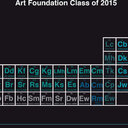α-Mangostin, A Natural Xanthone, Induces Apoptosis and ROS Accumulation in Human Rheumatoid Fibroblast-Like Synoviocyte MH7A Cells.
Keywords
Abstract
BACKGROUND
Rheumatoid arthritis (RA) is a complicated and heterogeneous chronic disease with the characteristic of progressive joint destruction, deformity and disability. It is associated with not only genetic but also environmental factors. Many studies suggest that RA-derived fibroblast-like synoviocyte (RA-FLS) is involved in the pathogenic process of RA. The apoptosis and proliferation of RA-FLS is of great importance in the development and progression in RA. Nowadays, more and more traditional Chinese medicine (TCM) or natural products are studied in the treatment of RA.
OBJECTIVE
To investigate the effects of several natural products and the apoptosisinduced effect of α-mangostin and its underlying mechanisms in RA-FLS MH7A cells.
METHODS
The effects of natural products on MH7A cells were detected by MTT assay. Annexin V-FITC/PI double labeling and DAPI staining were adopted to observe the apoptosis induced by α-mangostin. The apoptosis related proteins were measured with western blotting analysis. ROS accumulation was determined by DHE staining.
RESULTS
Xantones, including Garcinone C, α-mangostin and γ-mangostin, significantly inhibited the MH7A cell viability. And α-mangostin induces apoptosis in MH7A cells. Further study showed that α-mangostin increased the ratio of Bax/Bcl-2 and increased the ROS generation in MH7A cells.
CONCLUSIONS
α-Mangostin induces the apoptosis of MH7A cells through increasing ROS accumulation and the ratio of Bax/Bcl-2, suggesting that α-mangostin should be benefit to the therapy of RA.





